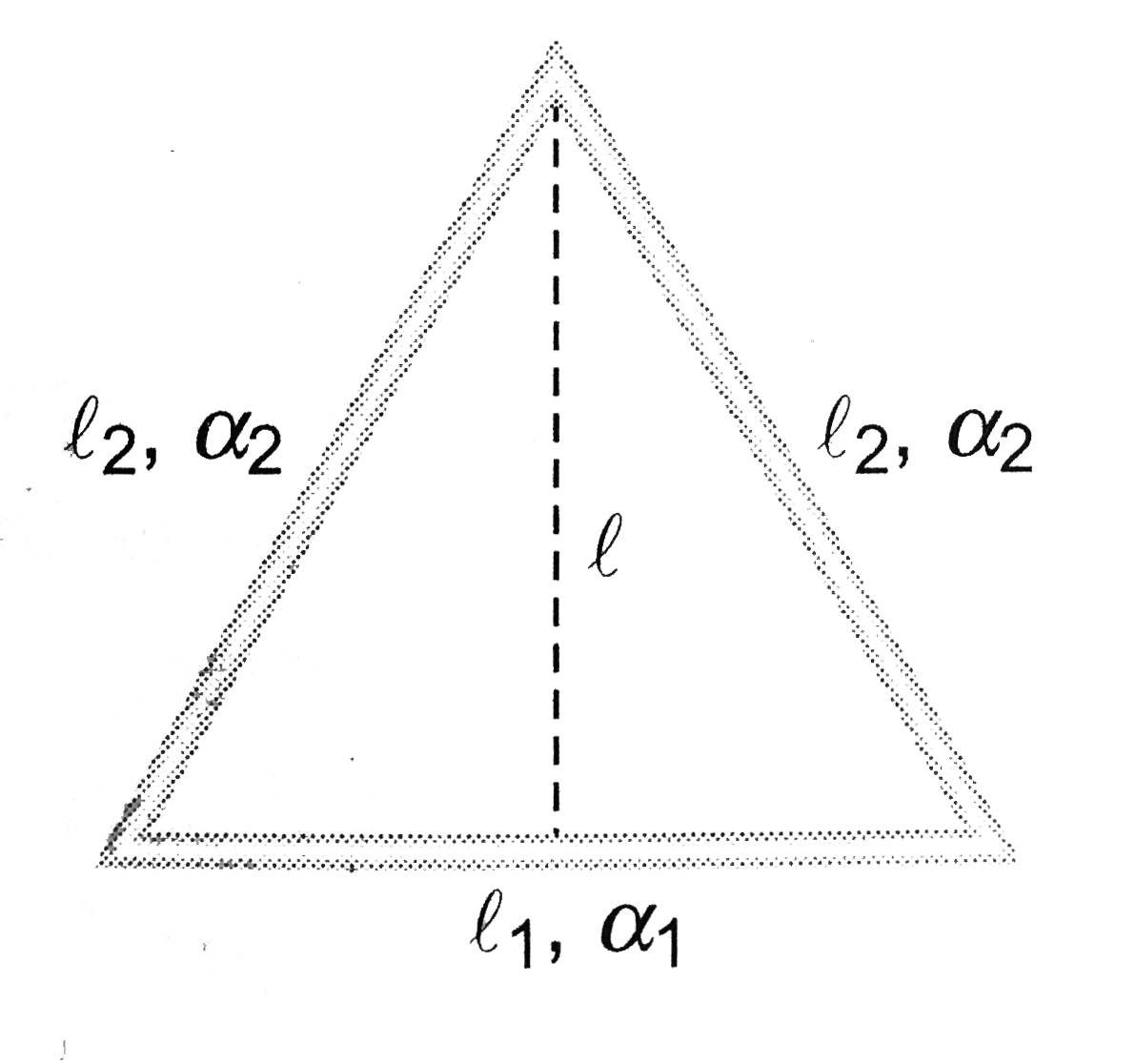A thin rod, length L0 at 0∘C and coefficient of linear expansion α has its two ends mintained at temperatures θ1 and θ2 respectively Find its new length .
To find the new length of a thin rod when its ends are maintained at different temperatures, we can follow these steps:
1. Identify Initial Conditions:
- The initial length of the rod at 0∘C is denoted as L0.
- The coefficient of linear expansion of the rod is given as α.
- The temperatures at the two ends of the rod are θ1 and θ2.
2. Calculate the Average Temperature:
- Since the rod's ends are at different temperatures, we can find the average temperature (θ) affecting the rod:
θ=θ1+θ22
3. Determine the Change in Length:
- The change in length (ΔL) of the rod due to thermal expansion can be calculated using the formula:
ΔL=L0⋅α⋅ΔT
- Here, ΔT is the change in temperature from the initial temperature. Since the initial temperature is 0∘C, we have:
ΔT=θ
- Therefore, substituting for ΔT:
ΔL=L0⋅α⋅(θ1+θ22)
4. Calculate the New Length:
- The new length (Lf) of the rod can be expressed as:
Lf=L0+ΔL
- Substituting the expression for ΔL:
Lf=L0+L0⋅α⋅(θ1+θ22)
- Factoring out L0:
Lf=L0(1+α⋅θ1+θ22)
5. Final Expression:
- Thus, the new length of the rod is given by:
Lf=L0(1+α2(θ1+θ2))
Final Answer:
The new length of the rod is:
Lf=L0(1+α2(θ1+θ2))
- The initial length of the rod at 0∘C is denoted as L0.
- The coefficient of linear expansion of the rod is given as α.
- The temperatures at the two ends of the rod are θ1 and θ2.
- Since the rod's ends are at different temperatures, we can find the average temperature (θ) affecting the rod:
θ=θ1+θ22
- The change in length (ΔL) of the rod due to thermal expansion can be calculated using the formula:
ΔL=L0⋅α⋅ΔT
- Here, ΔT is the change in temperature from the initial temperature. Since the initial temperature is 0∘C, we have:
ΔT=θ
- Therefore, substituting for ΔT:
ΔL=L0⋅α⋅(θ1+θ22)
- The new length (Lf) of the rod can be expressed as:
Lf=L0+ΔL
- Substituting the expression for ΔL:
Lf=L0+L0⋅α⋅(θ1+θ22)
- Factoring out L0:
Lf=L0(1+α⋅θ1+θ22)
- Thus, the new length of the rod is given by:
Lf=L0(1+α2(θ1+θ2))
The new length of the rod is:
Lf=L0(1+α2(θ1+θ2))
Topper's Solved these Questions
- THERMAL PROPERTIES OF MATTERBook:NCERT EXEMPLAR ENGLISHChapter:THERMAL PROPERTIES OF MATTERExercise:Very short Answer type Questions
Explore 15 Videos
- SYSTEM OF PARTICLES AND ROTATIONAL MOTION Book:NCERT EXEMPLAR ENGLISHChapter:SYSTEM OF PARTICLES AND ROTATIONAL MOTION Exercise:Long answer type questions
Explore 12 Videos
- THERMODYNAMICS Book:NCERT EXEMPLAR ENGLISHChapter:THERMODYNAMICS Exercise:LONG ANSWER TYPE QUESTIONS
Explore 5 Videos
Similar Questions
An isosceles triangles is formed with a thin rod of length l1 and coefficient of linear expansion α1, as the base and two thin rods each of length l2 and coefficient of linear expansion α2 as the two sides. The distance between the apex and the midpoint of the base remain unchanged as the temperature is varied. the ratio of lengths l1l2 is

View SolutionAn isosceles triangles is formed with a thin rod of length l1 and coefficient of linear expansion α1, as the base and two thin rods each of length l2 and coefficient of linear expansion α2 as the two sides. The distance between the apex and the midpoint of the base remain unchanged as the temperature is varied. the ratio of lengths l1l2 is

View SolutionAn isosceles triangles is formed with a thin rod of length l1 and coefficient of linear expansion α1, as the base and two thin rods each of length l2 and coefficient of linear expansion α2 as the two sides. The distance between the apex and the midpoint of the base remain unchanged as the temperature is varied. the ratio of lengths l1l2 is

View SolutionTwo rods, one of aluminium and other made of steel, having initial lengths l1andl2 are connected together to form a single rod of length (l1+l2). The coefficient of linear expansions for aluminium and steel are αa and αs respectively. If length of each rod increases by same amount when their tempertures are raised by t∘C, then find the ratio l1(l1+l2).
View SolutionA metal rod lenth L0 whose coefficient of linear expansion α=10−3^(0)C−1 is heated such that its temperature changes by 1000K assuming α is constant during the temperature change (e=2.7). Which of the following statements are true
View SolutionThere are two rods of length l1 and l2 and coefficient of linear expansions are α1 and α2 respectively.
Find equivalent coefficient of thermal expansion for their combination in series.
View SolutionTwo rods of length l1 and l2 are made of material whose coefficient of linear expansion are α1 and α2 , respectively. The difference between their lengths will be independent of temperatiure if l1/l2 is to
View SolutionA metal rod of Young's modules Y and coefficient of thermal expansion α is held at its two ends such that its length remains constant. If its temperature is raised by t∘C, the linear stress developed in it is
View SolutionA metal rod of Young's modulas Y and coefficient of thermal expansion α is held at its two ends such that its length remains invariant. If its temperature is raised by t∘c, then the linear stress developed in it is
View SolutionThe temperature of an isotropic cubical solid of length l0, density ρ0 and coefficient of linear expansion α is increased by 20∘C. Then at higher temperature , to a good approximation:-
View Solution